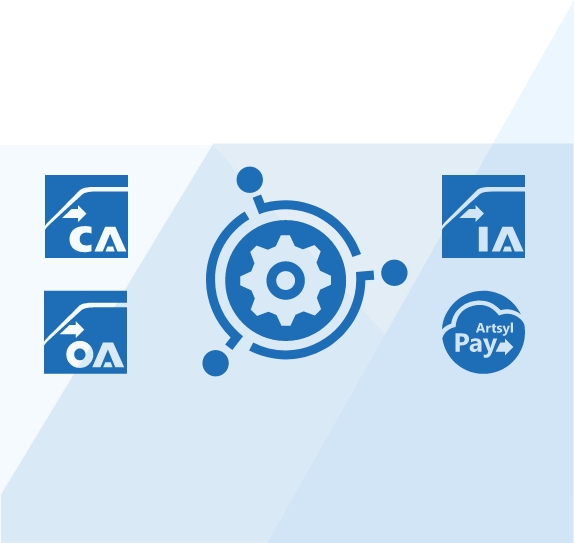For any business owner, it is essential to understand the difference between purchase orders and invoices. These two documents are crucial in any business and are often used interchangeably. However, they serve different purposes and have different implications. Therefore, understanding how to use them correctly can help avoid confusion, errors, and legal trouble. This blog post will explain the importance of understanding the difference between purchase orders and invoices.
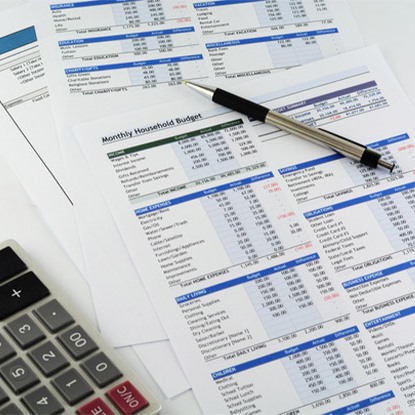
Are you ready to take your business to the next level?
With automated order processing by OrderAction and intelligent automation, you can free up your time and resources to focus on growing your business.
What Are Purchase Orders?
Purchase orders are documents that businesses use to request products or services from their suppliers. They are typically created by the purchasing department or an authorized person within the organization. POs are sent to the supplier as a formal request for the desired products or services.
Purchase order definition
A purchase order (PO) is a commercial document issued by a buyer to a seller, indicating the type, quantity, and agreed-upon price of products or services the buyer wants to purchase. It is a formal request from the buyer to the seller to provide the requested products or services on specific terms and conditions, such as delivery date, payment terms, and any other relevant details.
A PO serves as a legal contract between the buyer and seller, providing a record of the transaction and establishing the terms of the agreement. Once the seller accepts the purchase order, they are legally obligated to fulfill it as specified in the document.
The PO process helps to ensure that businesses receive the goods or services they need in a timely manner and helps to minimize the risk of miscommunication or disputes between buyers and sellers.
Intelligent Process Automation Solution
Related Videos
Purpose of a purchase order
The use of purchase orders is a common practice in many businesses, particularly those that require large quantities of goods or services. By using POs, businesses can ensure that they receive the items they need in a timely manner and at the agreed-upon price. They also help to establish clear communication and expectations between the buyer and supplier.
- Buyer and Seller Details: The purchase order should include the buyer and seller’s name, address, and contact information.
- PO Number: A unique purchase order number is assigned to each PO for easy tracking and reference.
- Product/Service Details: The PO should clearly state the type and quantity of goods or services being ordered, along with any specifications or details.
- Unit Price: The purchase order should specify the agreed-upon price per unit of the products or services being ordered.
- Total Price: The total price of the order should be calculated based on the quantity and unit price of the products or services.
- Delivery Date: The purchase order should specify the desired delivery date for the products or services ordered.
- Shipping Details: The PO should include any special instructions regarding shipping or delivery of the products.
- Payment Terms: The purchase order should specify the agreed-upon payment terms and conditions.
- Signature: An authorized person from the buyer’s organization should sign the purchase order.
In general, a PO should include a clear and detailed description of the products or services being ordered, along with the terms and conditions of the transaction. For POs to be fulfilled accurately and efficiently, buyers should include all necessary information in their purchase orders.
The benefits of using purchase orders in business
Using POs in business provides several benefits. To begin with, purchase orders help to streamline the procurement process by providing a standardized way to request goods or services. This can save time and reduce errors by ensuring that all the necessary information is included in the request.
Purchase orders help to establish clear communication between the buyer and seller by providing a detailed description of the goods or services being ordered, along with the terms and conditions of the transaction. This helps avoid misunderstandings or disputes between the parties.
A PO provides a transaction record that can be used to track the status of the order from when it is placed to when it is received. This helps ensure the order is delivered on time and according to the agreed-upon terms.
Purchase orders provide a formal transaction record that can be used for record-keeping and accounting purposes. This helps ensure that transactions are properly documented and can be easily audited if necessary.
Last but not least, POs can help to control costs by providing a way to track the price of goods or services and ensuring that the buyer is not overcharged or billed for items that were not ordered.
Transform your business with automated invoice processing. Try InvoiceAction by Artsyl and learn how to streamline your financial processes and boost productivity today while saving money and time.
Book a demo now
What Are Invoices?
An invoice is a document a seller sends to a buyer to request payment for goods or services. The commercial document includes a detailed description of the products or services sold, the agreed-upon price, and any applicable taxes or fees.
Invoices serve as a transaction record and provide the buyer with the necessary information to make payment. They are a key component of the business billing and payment process and are typically issued after the goods or services have been delivered or rendered.
Definition of an invoice
An invoice is a commercial document that a seller sends to a buyer to request payment for goods or services. It is a detailed statement of the products or services sold, the agreed-upon price, and any applicable taxes or fees.
Invoices typically include the seller and buyer details, invoice number, product or service details, total price, payment terms and conditions, payment method, shipping details, and the date the invoice was issued.
Invoices serve as a formal transaction record and provide the buyer with the necessary information to make payment. They are an essential component of the billing and payment process for businesses, helping to ensure that transactions are properly documented and that payment is received in a timely manner.
The information typically included in an invoice
Invoices typically include the following information:
- Seller and Buyer Details: The name, address, and contact information of both the seller and buyer.
- Invoice Number: A unique identification number is assigned to each invoice for easy tracking and reference.
- Product/Service Details: A description of the products or services sold, including the quantity, unit price, and other relevant details.
- Total Price: The total price of the products or services sold, including any taxes or fees.
- Payment Terms: The payment terms and conditions include the due date and applicable discounts or late fees.
- Payment Method: The payment method the seller accepts, such as cash, check, credit card, or electronic payment.
- Shipping Details: Any shipping or delivery instructions or charges.
- Date: The date that the invoice was issued.
The benefits of using invoices in business
Using invoices in business provides several benefits, including direct savings and improved business reputation. For starters, invoices provide a formal transaction record that can be used for record-keeping and accounting purposes. This helps to ensure that transactions are properly documented and can be easily audited if necessary.
Payment Tracking
Invoices provide a way to track payments and outstanding balances. This helps to ensure that payments are received in a timely manner and that any outstanding balances are promptly addressed.
Improved Cash Flow
Invoices help to improve cash flow by providing a clear and formal request for payment. This helps to ensure that payments are made on time and that late payments do not disrupt cash flow.
Better Communication
Invoices help to establish clear communication between the buyer and seller by providing a detailed description of the products or services sold, along with the terms and conditions of the transaction. This helps avoid misunderstandings or disputes between the parties.
Professionalism
Invoices provide a professional image for the business and help establish customer credibility. They demonstrate that the business is organized and efficient and values its customers and takes its financial obligations seriously.
In short, businesses use invoices to improve efficiency, communication, and financial management, as well as to provide a formal record of transactions for record-keeping and accounting purposes.
5 Main Differences Between Purchase Order vs. Invoice
To begin with, purchase orders (POs) are documents used to initiate a purchase of goods or services. A PO is a formal agreement between a buyer and a supplier outlining the order’s details, including the type, quantity, price, and delivery date.
In contrast, an invoice is a bill the seller issues to the buyer for the goods or services delivered. It contains the details of the transaction, such as the date of the sale, the payment terms, and the amounts charged.
Say goodbye to the headaches and frustrations of manual AP processing. ArtsylPay brings you the convenience of invoice automation and the immediacy of electronic fund transfers. Eliminate errors and delays with ArtsylPay automated payment processing.
Book a demo now
Functions of purchase orders vs. invoices
Secondly, POs and invoices serve different functions. POs are used to confirm the goods or services being purchased and outline the transaction terms. On the other hand, invoices serve as a formal request for payment for the goods or services rendered.
Any business owner would agree it is essential to ensure that the details on the invoice match those on the PO. If there is a discrepancy, it could mean that the goods or services were not delivered according to the agreed-upon terms. This could result in payment disputes, delays, or even legal action.
Purchasing control
Thirdly, POs also serve as a control mechanism. They can help prevent fraud by setting restrictions on what purchases can be made and by whom. A PO can also ensure that purchases are reviewed and approved in advance, preventing buyers from making inappropriate purchases.
In contrast, invoices are used to monitor payments and ensure that goods or services are paid for in a timely and accurate manner. Keeping good financial records is crucial in any business. Therefore, it is essential to clearly understand the difference between POs and invoices to avoid miscalculations, missed payments, or overpayments.
Managing cash flow using POs vs. invoices
In addition, having a clear understanding of the difference between POs and invoices can help businesses manage their cash flow effectively. POs and invoices can be used to track and manage inventory levels, which can help businesses avoid overstocking or understocking.
Overstocking can lead to revenue loss, while understocking can result in customer dissatisfaction. By tracking the purchase and delivery of goods, businesses can ensure adequate stock levels to meet customer demand.
Lastly, knowing the difference between POs and invoices can help establish good business relationships. Clear communication and accurate record-keeping can help build trust between buyers and suppliers. This, in turn, can lead to more successful business transactions and long-lasting partnerships.
Any business must understand the difference between purchase orders and invoices. Using these two documents appropriately is essential to avoid confusion, errors, and legal issues. Control mechanisms, cash flow management, and good business relationships are all supported by POs and invoices.
As a result, all business owners must teach their employees how to use purchase orders and invoices effectively. By doing this, they will ensure the smooth operation of their business and its long-term success.
Сontent and Structure: Difference Between Purchase Orders vs. Invoices
While both purchase orders and invoices are important documents in the procurement process, they differ in content and structure.
Content differences between POs and invoices
Purchase Orders: They typically include the details of the goods or services being ordered, such as the product or service description, quantity, unit price, and any applicable discounts. They may also include shipping and delivery instructions and any applicable taxes or fees.
Invoices: Invoices provide a detailed statement of the products or services sold, including the quantity, unit price, applicable taxes or fees, and the total price of the transaction. Invoices include payment terms and conditions, such as the due date and applicable discounts or late fees.
Structure differences between POs and invoices
Purchase Orders: Purchase orders generally have a standardized format that includes the buyer’s information, the seller’s information, the product or service details, and the terms and conditions of the transaction. They are typically issued by the buyer and sent to the seller to request goods or services.
Invoices: Invoices also have a standardized format that includes the seller’s, buyer’s, and transaction details. The seller typically issues invoices to request payment for goods or services provided.
The content and structure of purchase orders and invoices differ. Invoices contain detailed information about the products or services sold and the terms and conditions of payment. Purchase orders specify the goods or services ordered, while invoices describe the goods or services ordered. The buyer typically issues purchase orders to request goods or services, while the seller issues invoices to request payment for goods or services.
Are you tired of spending countless hours manually processing invoices and dealing with errors? With InvoiceAction and intelligent automation, you can streamline your business processes and save valuable time and money.
Book a demo now
Examples of scenarios where purchase orders and invoices are used
There are many scenarios where purchase orders and invoices are used in business. Here are some common examples:
Purchase Orders:
- A manufacturing company issues a purchase order to a supplier to request raw materials needed for production.
- A retailer issues a purchase order to a distributor to request a new shipment of products for their store.
- An organization issues a purchase order to a service provider to request a consulting service or maintenance work.
Invoices:
- A supplier sends an invoice to a customer for products that have been shipped and received.
- A service provider sends an invoice to a client for services rendered, such as consulting or legal services.
- A vendor sends an invoice to a company for software or equipment leased or rented.
In both scenarios, purchase orders vs. invoices are used to formalize and document the transaction, establish payment terms and conditions, and track payment and delivery of goods or services. They play a crucial role in the procurement process and help to ensure that transactions are properly documented and that payment is received in a timely manner.
Importance of Accurate Purchase Orders and Invoices
Accurate purchase orders and invoices are essential for the smooth operation of a business. Here are some reasons why:
Legal and Financial Compliance
Accurate purchase orders and invoices help ensure a business complies with legal and financial regulations. For example, tax authorities require businesses to keep accurate financial records, including purchase orders and invoices.
Payment and Cash Flow Management
Accurate purchase orders and invoices are necessary for managing payments and cash flow. Only accurate or complete information can lead to timely payments or even non-payment, which can negatively impact cash flow and business operations.
Dispute Resolution
Accurate purchase orders and invoices can help prevent or resolve disputes between buyers and sellers. If there is a discrepancy between the goods or services ordered and the invoice received, accurate purchase orders can help to clarify the situation and resolve the dispute.
Inventory Management
Accurate purchase orders can help with inventory management by providing a clear record of goods ordered and received. This helps businesses ensure sufficient inventory to meet customer demand and avoid stockouts.
Planning and Forecasting
Accurate purchase orders and invoices can also help businesses with planning and forecasting. Businesses can identify trends and make informed decisions about future purchases by analyzing historical data on purchase orders and invoices.
As a final thought, correct purchase orders and invoices are essential for legal and financial compliance, payment and cash flow management, dispute resolution, inventory management, planning and forecasting, and dispute resolution. A complete and accurate purchase order and invoice can help businesses operate more efficiently and effectively.
How Software Helps Manage POs and Invoices
Software for managing Purchase Orders (POs) and invoices offers an array of functionalities that streamline various operational and financial aspects of a business. Here’s a breakdown of how such software can be instrumental.
Centralized Database
Software solutions offer a centralized database where all POs and invoices can be stored and accessed. This eliminates manual file-keeping and makes it easier to retrieve documents whenever required.
Automation
Automation features in these software platforms facilitate automatic generation of POs based on preset conditions like inventory levels. Invoice generation can also be automated once a Sales Order is confirmed or goods/services are delivered.
Real-time Tracking
Real-time tracking features give you a live status of where a particular order or invoice is in its lifecycle. This is invaluable for managing lead times, predicting delivery dates, and improving customer satisfaction.
Approval Workflows
Many businesses have approval hierarchies for POs and invoices. Software allows for the creation of automated workflows where these documents can be sent for approval, making the process faster and more efficient.
Financial Management
Having all your POs and invoices in one system simplifies budgeting and forecasting. The software can generate various reports and analytics that help you understand spending patterns, profit margins, and other key financial metrics.
Integration with Other Systems
Most PO and invoice management software can integrate seamlessly with other enterprise systems like ERP (Enterprise Resource Planning), CRM (Customer Relationship Management), or accounting software. This ensures data consistency and minimizes manual data entry.
Legal Compliance and Audit Trails
Such software is often designed to comply with legal requirements, ensuring that all your invoices and POs meet regulatory standards. It also maintains an audit trail for all activities, an important feature for compliance and dispute resolution.
Vendor and Customer Management
Software often includes features for managing vendor and customer information, making it easy to handle POs and invoices, as well as negotiations, contracts, and payment terms within the same platform.
By employing software to manage POs and invoices, businesses can significantly reduce manual errors, save time, and focus on strategic activities that add value to their operations. In an era where data-driven decision-making is paramount, the insights provided by such software are invaluable.
Take the next step to automate your AP processes.
Save valuable time and money and complete payments to vendors automatically.
Discover how ArtsylPay solutions can help you maximize efficiency and increase revenue.
Book a demo now
FAQ
What do purchase orders include?
Purchase orders typically include details such as the number of items required, the unit price, and the delivery date. They may also include any special instructions or terms the supplier must follow. Once the supplier receives the purchase order, they can prepare the necessary products or services and send them to the buyer.
What is the difference between a purchase order and an invoice?
A purchase order is a document a buyer issues to request goods or services from a seller, while a seller issues an invoice to request payment for goods or services provided.
Do I need to use both purchase orders and invoices?
Yes, using both purchase orders and invoices is recommended in the procurement process. Purchase orders are used to request goods or services, while invoices are used to request payment for goods or services.
Can a purchase order be used as an invoice?
No, a purchase order cannot be used as an invoice. A purchase order is a request for goods or services, while an invoice is a request for payment for goods or services provided.
When should I use a purchase order, and when should I use an invoice?
A purchase order should be used when requesting goods or services from a supplier, while an invoice should be used to request payment for goods or services provided.
Can I issue an invoice before receiving a purchase order?
Generally, issuing an invoice before receiving a purchase order is not recommended. This can create confusion and result in delayed or non-payment. It is important to have a clear understanding of the terms and conditions of a transaction before invoicing.
What information should be included in a purchase order and an invoice?
A purchase order should include the product or service description, quantity, unit price, and applicable discounts. In contrast, an invoice should include details such as the quantity, unit price, any applicable taxes or fees, and the total price of the transaction, as well as payment terms and conditions.
Who typically issues a purchase order, and who typically issues an invoice?
The buyer typically issues a purchase order to request goods or services, while the seller typically issues an invoice to request payment for goods or services provided.





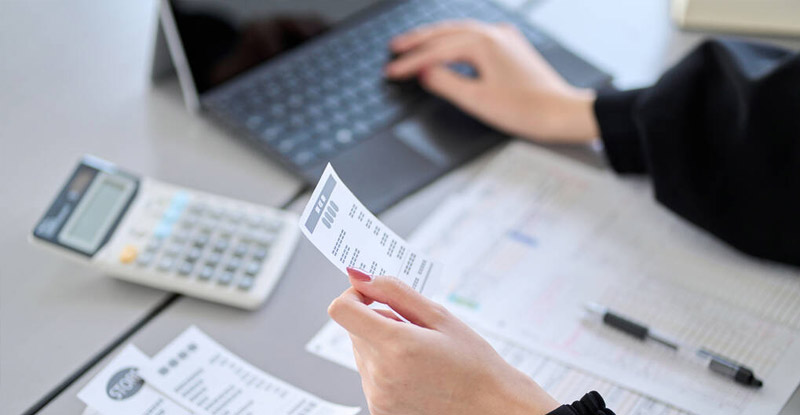

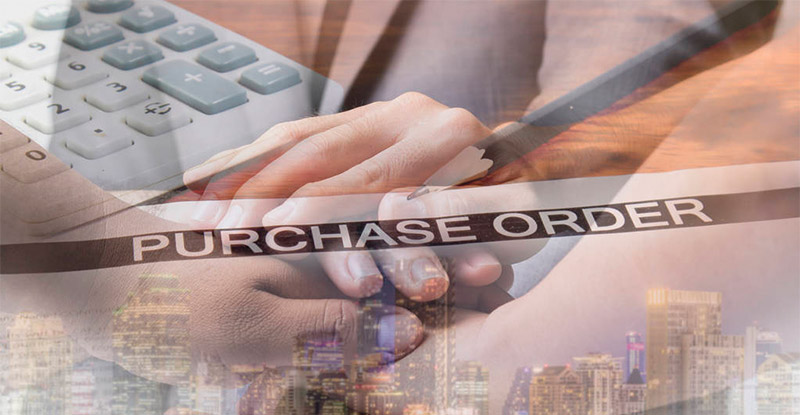 What Is a Purchase Order: Complete Guide
What Is a Purchase Order: Complete Guide An Ultimate Guide to Invoice Processing
An Ultimate Guide to Invoice Processing Sales Order Processing:
Sales Order Processing: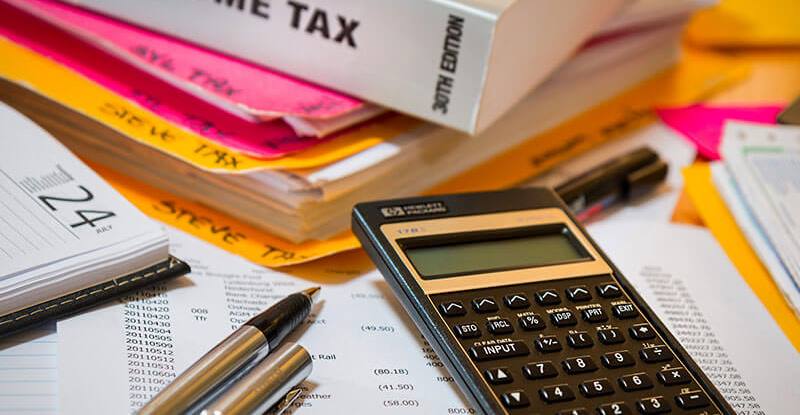 Invoice Workflow Automation
Invoice Workflow Automation Making Order Processing Efficient
Making Order Processing Efficient How Does Invoice Automation Work?
How Does Invoice Automation Work?